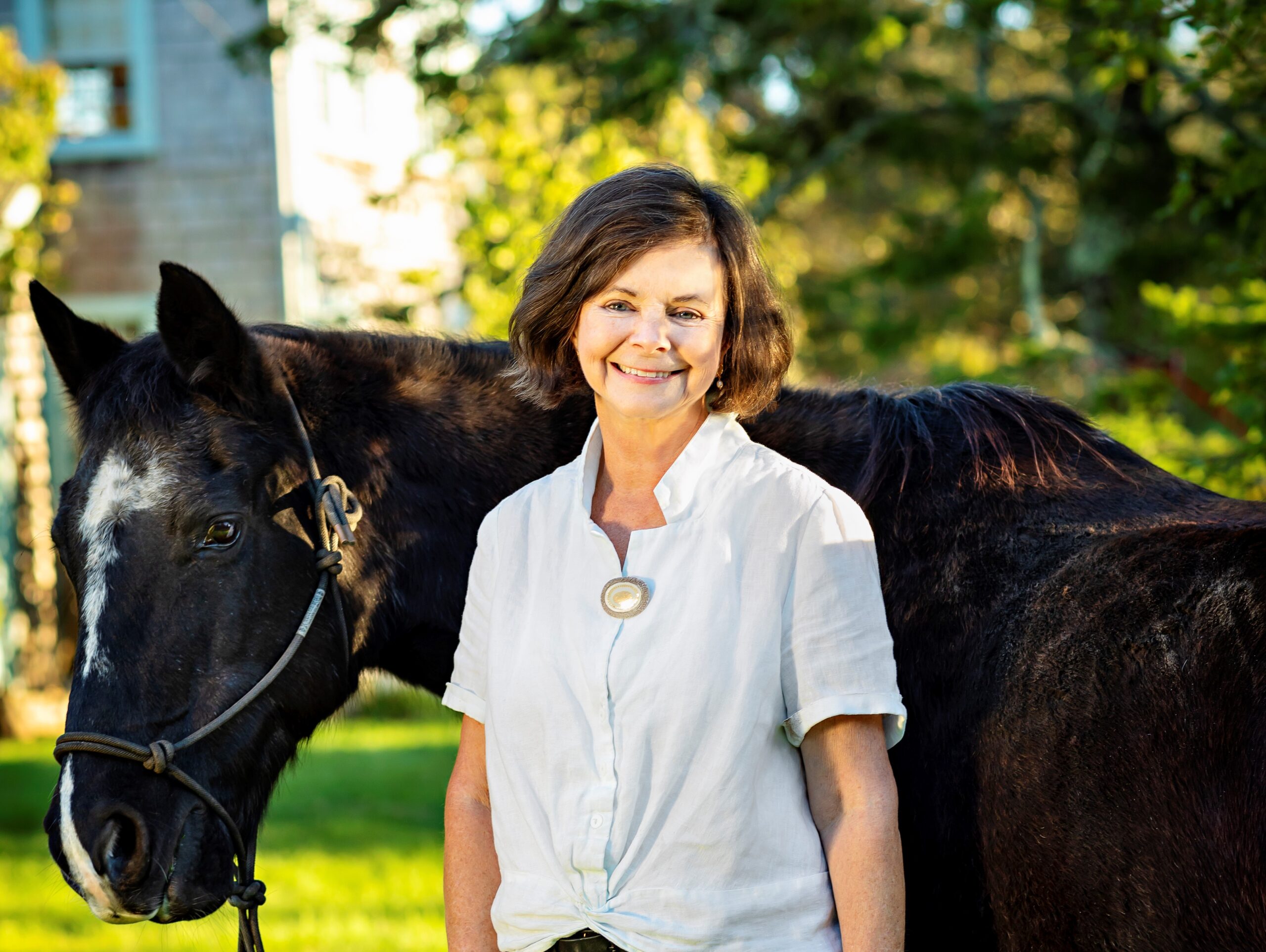Ahead of her upcoming events with the Wheeler Centre, we spoke with Pulitzer Prize-winning author and journalist Geraldine Brooks about her latest novel Horse – an epic tale exploring histories of art, sport and racism, inspired by the real life thoroughbred race horse Lexington.

Your new novel Horse weaves together three fictional narratives, each based on the existence of a real horse named Lexington who is considered one of the greatest thoroughbred racehorses in US history. How did you first encounter Lexington and what drew you towards using his history for your novel?
I’d been invited to lunch at Plimoth Plantation, a living history museum devoted to the earliest English settlement in Massachusetts. I happened to be seated near an official from the Smithsonian Institution, who told us he had just delivered the skeleton of the fastest and most famous racehorse of the 19th century from storage in D.C., to be displayed at the International Museum of the Horse in Kentucky. This was a horse so fast that the mass-produced stopwatch was manufactured so his fans could clock times in races that regularly drew more than twenty thousand spectators. A horse so handsome that the best equestrian artists vied to paint him. By the time the official got to the story of what had happened to the horse during the Civil War, I knew I’d found the subject of my next novel.
What was your research process for this book?
The fate of that horse, of the people who trained him, the painter who documented him and the Smithsonian scientists who restored his skeleton, provided the factual scaffolding on which I have let my imagination work. To build that scaffolding I took deep dives into the racing newspapers of the day that reported every detail of the horse’s life and tried to follow the elusive threads of fact about the Black horsemen, many enslaved, who were critical to his training and care. I visited scientists who prepare bones and curators who restore 19th century paintings. I did dozens of interviews with equine vets and historians.
There are three narrative threads in Horse. How long did it take you to tease out these arcs from the source material?
My original idea was to have a two-stranded story, the historical tale of the horse’s life braided with a contemporary thread about the science at the Smithsonian. But then I discovered the mysteries surrounding paintings of the horse and the fascinating life of the artist who painted them. The strange provenance of one of his paintings led to the third thread, in post-WWII New York City, where the art world is roiling as painters like Pollock and De Kooning are shaping a new aesthetic. It’s not so difficult to find a way into each strand, the slow and painstaking work is discovering how they will connect with each other.
You own a horse on your property in Martha’s Vineyard. Have horses always been an important part of your life? What is it about horses that you are drawn to?
I have always been an animal obsessive, but I came very late to horses. Growing up in inner Sydney, they just weren’t a thing. Then, in 2011, I went on a trail ride in New Mexico and it was such a transcendent experience I joined the ranks of the horse-crazy and now spend a good part of each day in the company of my mare, Valentine.
You’re a journalist as well as a historical novelist. Would it be fair to say you prefer to ground yourself in facts as a storyteller? Is truth stranger than fiction?
At the beginning of the Afterword of Horse, I quote Mark Twain: ‘Fiction is obliged to stick to possibilities. Truth isn’t.’ For me, the best idea for a novel is something you wouldn’t dare to make up, but nevertheless, it happened.
Geraldine Brooks will appear as part of the State Library Salon Series on Thursday 21 July and will join Santilla Chingaipe in conversation for our Books and Ideas at Montalto series on Friday 22 July
Related Posts

Read
Anne-Marie Te Whiu Receives The Next Chapter Alumni Poetry Fellowship
2 Apr 2024

Read
What's on in April: Resident Organisation Round Up
28 Mar 2024

Read
Blak & Bright First Nations Literary Festival returns in 2024
7 Mar 2024

Read
What's on in March: Resident Organisation Round Up
29 Feb 2024

Read
Hot Desk Extract: International
23 Feb 2024

Read
Hot Desk Extract: The Rooms
23 Feb 2024
Share this content